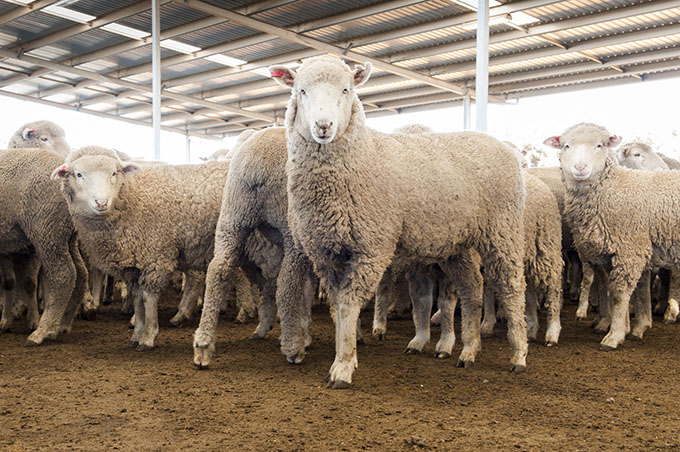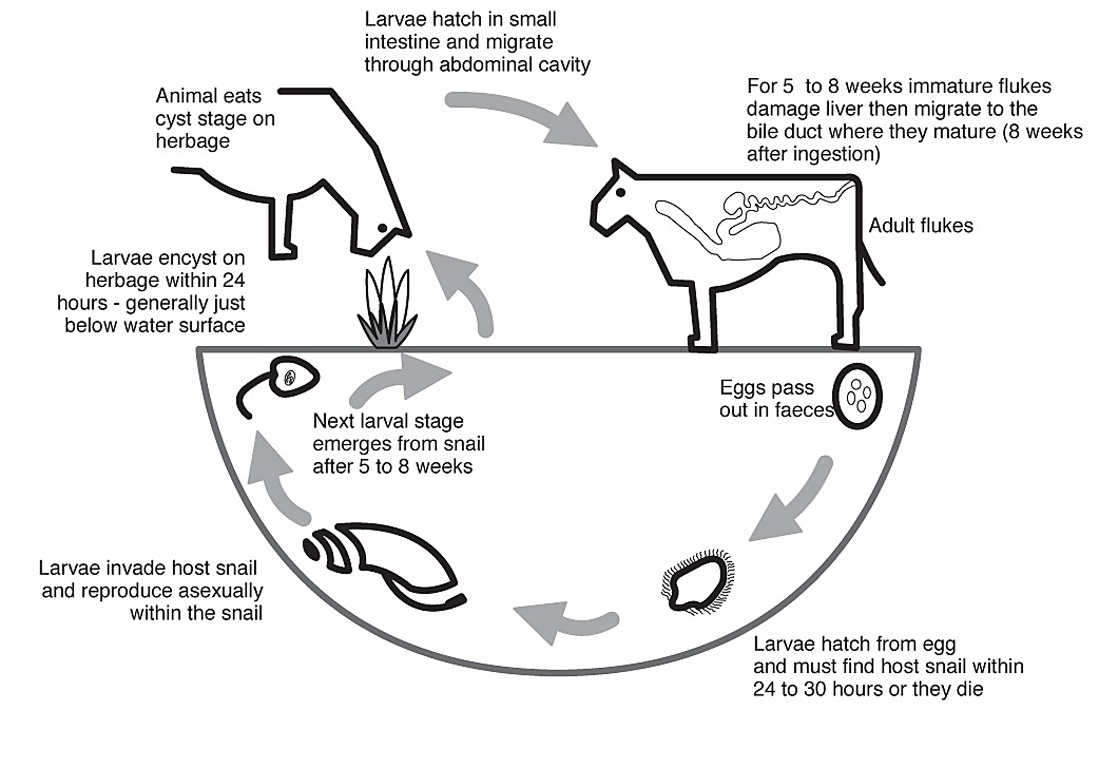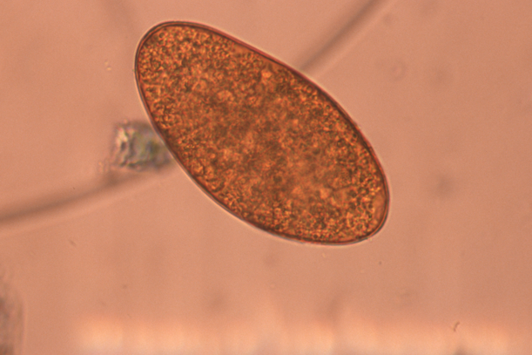
Liver fluke is a reportable disease
Liver fluke is a zoonotic disease.
Liver fluke is not present in Western Australia.
Published import conditions to prevent the introduction of liver fluke into Western Australia apply to all carrier animals (all ruminants, camelids and horses).
The presence or suspicion of liver fluke must be reported in Western Australia.
Liver fluke (Fasciola hepatica) is a parasite that can infect and live in the liver and bile ducts of a range of animal hosts and occasionally humans.
The disease caused by liver fluke varies in severity by species and age of the host animal:
- Ruminants are the most susceptible to disease with small ruminants (sheep and goats) more susceptible than cattle.
- Alpacas and llamas are thought to be susceptible to disease caused by liver fluke.
- Animals such as horses, deer, kangaroos and wallabies can also become infected with flukes, but they rarely show signs of disease.
Production losses and managing liver fluke represents a significant cost to the livestock industry. Liver fluke is common throughout the world, including in parts of eastern and southern Australia. Fortunately, liver fluke is not present in Western Australia, but the importation of infected animals from parts of the south and east coast of Australia poses a risk to Western Australian livestock industries.
Several anthelmintics (drenches) are available for the treatment of liver fluke, of varying effectiveness against the adult and immature stages.
See Part 3 of LB1 Health Certificates for importing livestock into Western Australia for more information on the requirements for treatment with Triclabendazole for livestock that are imported into WA.
Liver fluke can produce either acute, subacute or chronic disease. Disease caused by liver fluke is rarely fatal in cattle, but often fatal in small ruminants (sheep and goats).
Acute disease is most common in small ruminants and usually occurs from late summer to late autumn following a relatively short-term intake of a large number of fluke cysts.
Signs include:
- loss of body condition
- abdominal pain
- anaemia
- jaundice
- death from liver haemorrhage.
Subacute disease is characterised by loss of body condition, jaundice and anaemia with death in 8 to 10 weeks.
Chronic disease is the most common form of the disease. Animals will become increasingly anaemic, and some may develop swelling under the jaw (bottle jaw). There is also a slow loss of body condition as animals become less reluctant to move or eat leading to poor productivity.
Some endemic diseases in ruminants can present similarly to liver fluke such as heavy infestations with other internal parasites or bacterial causes such as Johne’s disease, which is a reportable disease in WA.
The liver fluke life cycle is complex and involves a mammalian host and an intermediate freshwater aquatic snail host:
- The adult fluke which resides in the bile ducts of the mammalian host lay eggs that are passed into the gastrointestinal tract and onto pasture via the faeces.
- Under favourable climate and environmental conditions the eggs hatch into larvae which infect freshwater aquatic snails (intermediate host).
- The larvae reproduce asexually in the snail and then emerge from the snail 5-8 weeks and form cysts on the pasture.
- The cysts are ingested by the mammalian host animal during grazing.
- The cysts hatch in the small intestine of the mammalian host and immature fluke burrow through the intestinal wall and migrate through the abdomen to the liver.
- The immature fluke will damage the liver tissue for several weeks before migrating to the bile ducts where they mature and reproduce while feeding on the blood in the bile ducts.

How to report liver fluke
If you suspect liver fluke, see signs of disease or death consistent with liver fluke in your animals, you must report it. There are 3 ways you can do this.
How to prevent liver fluke
Without effective testing and treatment protocols, infected animals could enter WA, shed liver fluke eggs on pasture and the infection could become established.
Animal owners importing liver fluke susceptible species into WA must ensure they comply with the published import conditions.
These conditions and requirements are underpinned by the Biosecurity and Agriculture Management Act 2007 and Biosecurity and Agriculture Management Regulations 2013. Failure to comply with this legislation may result in prosecution and a fine of up to $20,000.
Importing livestock into Western Australia
Before susceptible livestock species from other Australian states/territories can enter into WA, the owner or agent of the livestock must comply with published import conditions that may require a negative liver fluke laboratory result from a department-approved laboratory for liver fluke testing.
The department-approved fluke egg sedimentation test (FEST) procedure is used for this testing and requires faecal samples of 10 grams for horses and cattle. For other species, a 4-gram sample is required.
DPIRD Diagnostics and Laboratory Services (DDLS) also offer a Fasciola hepatica copro-antigen detection ELISA, for post-entry testing of sheep and cattle samples only and at this stage is only available at DDLS - Animal Pathology
Collect a fresh faecal sample, refrigerate (2 to 8°C), and dispatch the sample to DDLS - Animal Pathology in an esky with ice or cold pack as soon as possible. Refer to the department-approved method below.
The published import conditions take the form of a species-specific LB1 Health Certificate and include requirements for testing and treatment for liver fluke.

